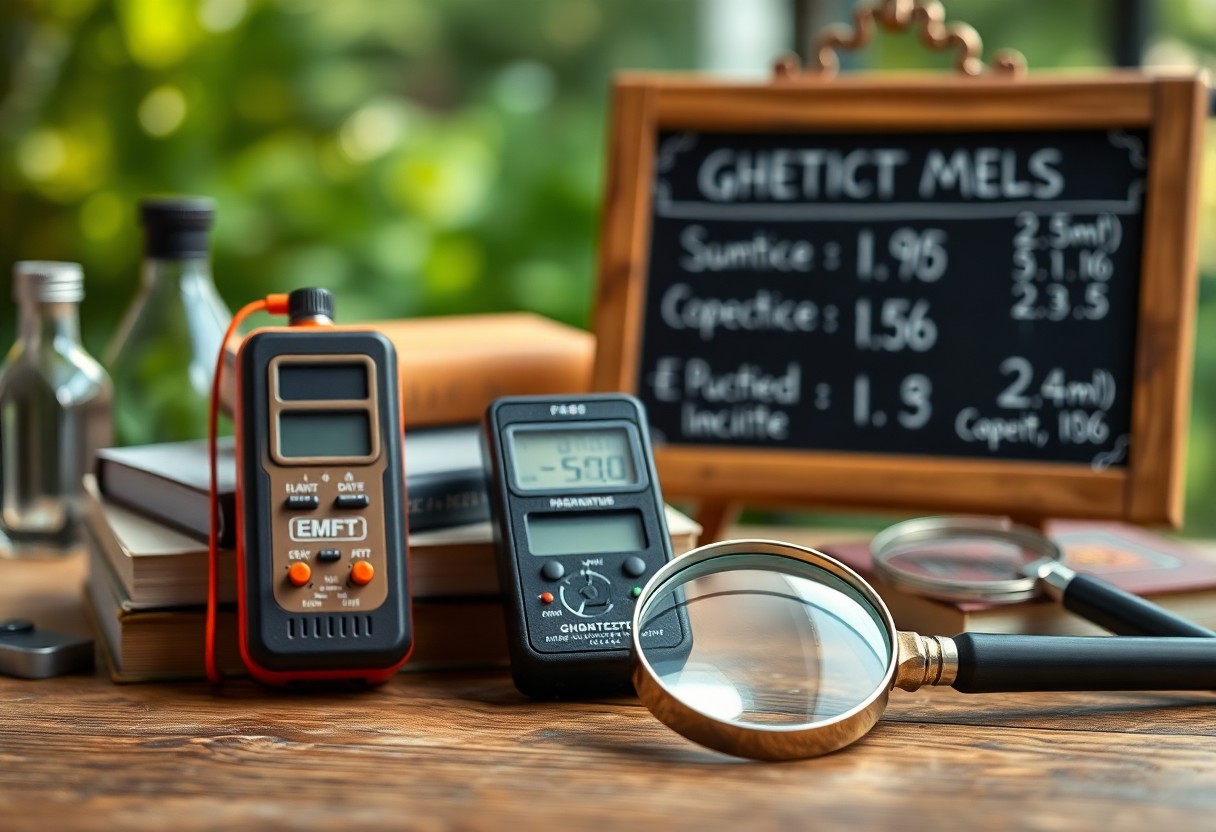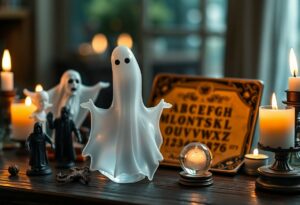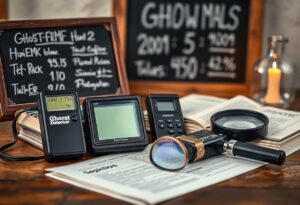There’s a long-standing fascination with ghosts and the paranormal, but as you explore into this intriguing topic, it’s vital to apply a scientific lens. This blog post will guide you through the various claims surrounding paranormal phenomena, examining the evidence (or lack thereof) that supports these beliefs. By the end, you’ll be equipped to differentiate between what can be scientifically explained and what remains in mystery, empowering you to make informed conclusions about the world of ghosts.

The History of Ghost Lore
Your understanding of ghost lore is enriched by centuries of storytelling that reflect collective fears, cultural values, and spiritual beliefs. Historical texts and folklore reveal how societies interpreted the unknown, often attributing lingering spirits to unfinished business or wrongful deeds. For an in-depth exploration, check out Ghost Busted: When Science Meets Paranormal Activity, which highlights the clash between science and these age-old tales.
Cultural Significance
Between the shadows of myth and reality, ghost stories offer a glimpse into cultural practices and beliefs. They serve to bond communities, providing a shared narrative that can be both cautionary and reflective. As tales of the supernatural are passed through generations, they not only entertain but also convey societal norms and moral lessons, making them a vital aspect of cultural heritage.
Evolution of Ghost Stories
An exploration of ghost stories reveals how they have evolved over time, adapting to the changing beliefs and values of society. From ancient folklore to modern paranormal thrillers, these narratives reflect social anxieties and existential questions prevalent in each era.
Significance lies in the way ghost stories have shaped our understanding of life and death, often revealing deeper truths about human nature. They’ve transformed from simple moral tales to complex narratives that challenge our perceptions of reality and the afterlife. Each retelling adds layers, ensuring that ghost stories remain relevant, continually inviting audiences to question what lies beyond our tangible existence.
Scientific Principles: Understanding the Supernatural
Any investigation into the supernatural must rely on scientific principles to unravel the mysterious phenomena that captivate our imaginations. By employing rigorous methodologies, researchers can discern the tangible from the intangible, leading to clearer insights into widely reported paranormal experiences. Understanding these principles provides you with a framework to critically analyze what is often dismissed as mere superstition.
The Nature of Perception
Against the backdrop of human experience, perception plays a pivotal role in how you interpret unusual events. Your sensory input can be misled by environmental factors, such as lighting, sound, or even stress, creating an altered reality that feels deeply genuine. This understanding can unlock the reasons behind what you might consider supernatural occurrences.
Common Misinterpretations
Understanding the nuances of your cognitive processes is vital in distinguishing genuine anomalies from mere misperceptions. The human brain often fills in gaps, leading to interpretations that can seem extraordinary. This inclination can produce a range of experiences that feel supernatural but can often be explained rationally.
In fact, many so-called paranormal experiences are the result of common psychological phenomena, such as pareidolia, where your mind perceives familiar patterns in random stimuli. This is evident in shadowy figures or unusual sounds in the environment that may trigger your fight-or-flight response. Also, cognitive biases can skew your interpretation of events, leading you to connect unrelated happenings due to preconceived notions. By recognizing these factors, you can gain a clearer perspective on what might initially appear as haunting but is rooted in psychological and environmental realities.
Psychological Explanations for Paranormal Experiences
While many individuals report experiencing paranormal events, psychological explanations often offer a clearer understanding. Research shows that the brain can create the perception of ghostly encounters due to various factors, including sleep deprivation, mental fatigue, and substance use. For further insight, you can explore the science of ghosts, which examines into how environmental factors influence your ghostly experiences.
The Role of the Mind
Beside environmental stimuli, your mind plays a significant role in shaping paranormal experiences. Psychological phenomena such as pareidolia, where you might see faces in clouds, can lead you to interpret ordinary stimuli as supernatural signals.
Psychosocial Factors
Psychosocial influences further contribute to your belief in paranormal events. Social environments, cultural context, and personal experiences play integral parts in shaping how you interpret unexplained occurrences. Consider these factors when evaluating your encounters:
- Your cultural background
- Your beliefs and values
- The influence of social groups
This understanding can help demystify your personal experiences.
Psychosocial aspects often intertwine with emotional states, reinforcing your perceptions of the paranormal. Emotional responses such as fear or nostalgia can heighten sensitivity to environmental cues, leading to interpretations that align with ghostly phenomena. Explore these psychosocial influences further:
- Your emotional state during the experience
- Peer pressure and societal beliefs
- The impact of media on your perceptions
This comprehensive perspective can illuminate how your context shapes your understanding of alleged supernatural occurrences.
The Role of Technology in Debunking Ghosts
Unlike the mystical world often portrayed in tales, modern technology plays a significant role in debunking claims of paranormal activity. By applying rigorous scientific methods, you can better understand the phenomena often mistaken for ghostly encounters. The integration of technology helps sift through the noise, providing clarity and evidence-based insights. For instance, you can explore The science behind seeing ghosts – BBC Three to gain further understanding of how science and technology intersect with the paranormal.
Equipment Used in Paranormal Investigations
Below, various tools are employed in paranormal investigations to gather evidence and analyze claims of ghostly encounters. Devices such as EMF meters, digital voice recorders, and infrared cameras are commonly used to detect anomalies that could indicate paranormal activity. You can find combinations of these technologies working together to provide a clearer picture of the environment being examined.
Analyzing Evidence: A Scientific Approach
Any evidence collected during investigations must undergo thorough examination. A systematic approach incorporates data analysis, such as cross-referencing findings with environmental changes or background noise, to ascertain the legitimacy of the phenomena. You can apply consistent methodologies to discern patterns and eliminate alternative explanations that might account for the observed activities.
Further analysis often involves peer review and replication of results, ensuring that findings are not just anecdotal but stand up against scrutiny. By documenting your investigation process, you establish a comprehensive record that can be shared for community validation. This meticulous approach fosters a more informed discourse on the nature of paranormal claims, allowing you to separate convincing evidence from mere coincidence.

Case Studies: Notable Paranormal Claims
Now, you may find it intriguing to explore into some of the most notable paranormal claims documented over the years, which have sparked widespread debate and investigation:
- 1. The Enfield Poltergeist (1977) – Reported phenomena included objects levitating and voices speaking through children.
- 2. The Amityville Horror (1975) – Claims of paranormal activity led to a book and multiple film adaptations.
- 3. The Bell Witch (1817) – An entity allegedly tormented the Bell family in Tennessee, reportedly inflicting physical harm.
- 4. The Winchester Mystery House – You may have heard of this sprawling mansion, renowned for its architectural oddities and ghostly tales.
Historical Events Examined
Events surrounding these claims often gain historical significance, as they reflect societal beliefs and fears regarding the unknown. You can explore how these phenomena were reported, their cultural context, and the impact they had on communities during their time. Each case serves as a window into the human psyche and the desire to understand life beyond the tangible.
Results of Scientific Investigation
About the subsequent investigations into these claims, you will find that varied methodologies were employed, including environmental monitoring and psychological assessments. Critics often argue that many of these so-called hauntings can be attributed to natural explanations, such as electromagnetic fields or even stress-induced hallucinations.
Indeed, studies conducted on paranormal claims often reveal significant insights. Research teams utilizing tools like infrared cameras, audio recorders, and temperature gauges have frequently identified ordinary causes for these phenomena, such as drafts, faulty wiring, and even sleep paralysis. By applying the principles of science, you can gain a more profound understanding of what truly lies behind the claims of the paranormal.
The Impact of Media on Public Perception
Keep in mind that media plays a significant role in shaping your view of paranormal activity. From thrilling ghost-hunting shows to gripping documentaries, these platforms have the power to influence your beliefs about the supernatural, often blurring the line between reality and entertainment. By sensationalizing supernatural stories, the media can lead viewers to accept unverified claims as truth.
Television Shows and Documentaries
After indulging in popular ghost-hunting programs and documentaries, you may find yourself more inclined to believe in the paranormal. These productions often amplify dramatic narratives and utilize unexplained phenomena, presenting them as convincing evidence. This scripting fosters a culture where skepticism is secondary to entertainment, affecting your perception of what is genuine.
The Influence of Social Media
To enhance your understanding of paranormal beliefs, consider the impact social media has on public perception. Platforms like Instagram and TikTok allow users to share personal experiences, photos, and videos of alleged hauntings, which can go viral quickly.
Plus, the ability to instantly share and comment on experiences allows for rapid dissemination of ideas and beliefs related to the paranormal. Often, users amplify bizarre claims, lacking critical evaluation, which can lead you to perceive these experiences as more common or credible than they might be. This dynamic can create echo chambers where superstitions are reinforced, making it crucial for you to approach such narratives with a discerning eye.
To wrap up
The exploration of ghosts and paranormal activity invites you to scrutinize the interplay between belief and evidence. Science offers a framework to debunk myths, providing explanations rooted in psychology, environmental factors, and human perception. By applying critical thinking and seeking empirical evidence, you empower yourself to differentiate between the mysterious and the understandable, fostering a deeper appreciation for the natural world and enhancing your understanding of the human experience. Embracing this rational approach equips you to engage with claims of paranormal phenomena thoughtfully and skeptically.



